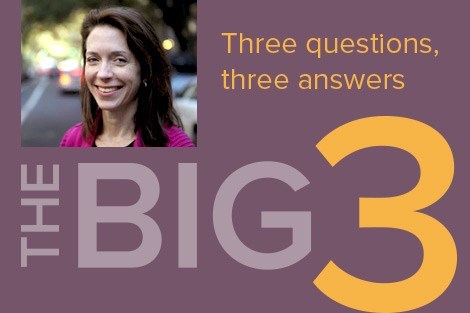Originally published on Harvard T.H. Chan on November 17, 2015 By Karen Feldscher.
Karestan Koenen, professor of psychiatric epidemiology at Harvard Chan School, is an expert on post-traumatic stress disorder (PTSD), a psychological reaction that occurs after a high-stress event and includes symptoms such as depression, anxiety, and flashbacks. Here, Koenen discusses PTSD among victims of sexual violence—and how to address the problem.
Usually we hear about PTSD among soldiers returning from war, or people who have lived through disasters. Is it also common among victims of sexual violence?
It’s very common. We do studies that look at PTSD in the general population, through which we can link PTSD to different kinds of events. We find that most PTSD in the U.S. population—close to 50%—is due to sexual or physical violence. That includes rape and sexual assault, but also partner violence, mugging, and childhood physical and sexual abuse. Around 30% of PTSD is due to sexual violence alone.
When people are shown how common these types of things are, they are often surprised. Part of the problem is that people who’ve had these experiences don’t share them because there’s a lot of stigma associated with them. So that adds to the perception that they don’t happen that often.
Most victims of sexual violence are women. Among women who are raped, about 50% will develop PTSD. All of those women will initially have PTSD symptoms, but about half will recover. About a quarter of women who are raped may have symptoms that don’t lessen over time.
What are some symptoms of PTSD experienced by victims of sexual violence?
After a traumatic event such as rape, a woman might develop intrusive thoughts—she can’t stop thinking about what happened. She may have nightmares. If she passes the place where it happened, she might have a panic attack. She might start avoiding things—for example, going to class or to the dining hall at a college—because she might be scared of seeing the person who assaulted her. She might experience hyper-arousal—always feeling on guard, like she’s always in danger. She might be very jumpy, unable to sleep, irritable. She might feel nothing, then feel very angry. She might start to think negative thoughts such as ‘I’m never going to get over this, this has ruined my life.’ She might start drinking to cope with the feelings. She might feel depressed because she’s skipping class or because she’s not getting out of her pajamas or not leaving her room—and that’s a bad cycle, because all of these things could make her feel even worse.
If symptoms persist, they can get in the way of how someone is doing in school, how they’re doing with friends. And, longer term, we know that PTSD is related to a lot of negative health problems, like increased weight gain, diabetes, cardiovascular disease, and potentially cognitive decline later in life.
What are the best ways to help those who develop PTSD after a sexual assault?
We know a lot about how to help people in the immediate aftermath of a sexual assault, and we also know a lot about how to treat PTSD. There are a range of trauma-focused therapies that are quite effective for PTSD. The majority of people who get those treatments—around 70%—will get better. PTSD doesn’t have to be a life sentence. The challenge is that effective treatments for PTSD aren’t widely disseminated. We need to do a better job of both responding to people early after sexual assaults, in a supportive way, and providing them with what they need so that they won’t ever develop PTSD. And if they do develop PTSD, we need to be able to get them treatments that work.
— Karen Feldscher
photo: Charlie Samuels







